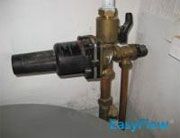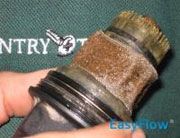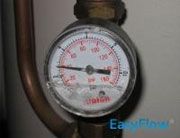- Home
- How to
- How to
- Services
- Services
- Maintenance Plan
- Location
- Guides
- Guides
- No Hot Water – Self help
- Unvented Water Heater
- Unvented Water Heater Faults
- G3 Building Regulations
- Thermal Store Water Heaters
- Thermal Store Faults
- Gledhill ElectraMate
- Gledhill PulsaCoil
- Gledhill Torrent
- Gledhill Stainless Lite
- OSO Unvented Heater
- MegaFlo – Heatrae Sadia
- Santon Premier Plus
- Albion
- Manco Riverstream and Powerstream
- Manco Gladiator & Stirling
- Telford Tempest
- Safety Considerations Unvented Cylinders
- Reduce Your Water Heating Bill
- Range Tribune
- About Us
- About us
- Forums
- Contact

Unvented Water Cylinder Engineers
G3 Qualified
-
Call Now
0161 941 5571
Unvented Water Heater Faults
Unvented Water Heater Faults
Water Discharged through the Tundish
A number of different faults might cause water to discharge through the tundish. However, all of them require urgent action in order to prevent water wastage and to correct a fault in a safety device. Some of the more common faults that cause this are highlighted below. Note that when water is discharged through a tundish, you should contact a plumber immediately.
Fault on Pressure Reduction Valve: If a fault develops with the pressure reduction valve, main pressure could be allowed into the cylinder, which increases the system’s pressure above 3 bars. An expansion valve may be set to operate between 6 and 9 bars. If the main supply pressure is over 6 bar, then this could open the safety valve, causing water to discharge through the tundish.
Fault on Expansion Valve: A fault on an expansion valve may make the valve more sensitive, which would allow it to open at pressures below 3 bar, and cause water to discharge through the tundish.
Fault with Expansion Vessel: Hot water expands. To accommodate this, your unvented hot water heater is equipped with an expansion vessel to contain the additional water volume. The vessel is a metal sphere containing a diaphragm made of neoprene. The space surrounding the expansion vessel is filled with an inert gas (nitrogen, for instance) at a pressure to match the cylinder’s static pressure, which is usually 3 bar.
Fault with Temperature and Pressure Relief Valve: If a fault develops with the temperature and pressure relief valve, it may cause the valve to open at normal operating temperatures within the cylinder. This will allow water to pass out of the valve and through the tundish, even if the temperature is 65 degrees centigrade, rather than the pre-set 95 degrees centigrade.
Combined Fault with Thermostat and High-Level Cut-Out: In this situation, water within the cylinder will be heated to 95 degrees centigrade. In normal operation, the electricity should have been cut when the water temperature reached 65 degrees. Next, the temperature cut-out should have been applied when the water reached 90 degrees centigrade. If a dual fault exists, the temperature and pressure relief valve is the last line of defence.
It’s designed to open when water temperature reaches 95 degrees to ensure that water does not transform into steam, which can expand far more rapidly and to a greater degree than water. In this situation, the water inside the cylinder is still being heated, as the heating element remains active. Cold water entering the cylinder will begin to heat as soon as it enters from the mains. Over time and without professional repairs, this type of fault could cause near-boiling water to flow out through the tundish for a long time.
Other Potential Faults
While the above faults are some of the most common, there are others that you may experience. Understanding these will help you determine if it is necessary to call EasyFlow for professional help, or if it is something you can troubleshoot on your own.
Immersion Heater Not Working: While your water heater’s immersion heater might not be operating because of any of the conditions discussed above, there is always the possibility that the fault lies with the immersion heater itself. It may also have to do with the thermostat that controls the immersion heater. Immersion heater and thermostat functionality must be checked using professional tools, such as an ohmmeter or voltmeter, and is not something that can be done by the average homeowner. Replacing a failed immersion heater or thermostat will also require professional assistance. Call EasyFlow today.
Continuous Tripping of Breakers or RCD: If you’ve noticed that the RCD or circuit breaker continually trips with your water heater, chances are good that the problem is the immersion heater. Often, a burned out heating element will burst the protective sleeve that surrounds it, allowing it to come into direct contact with water. This will trip the RCD or circuit breaker. An EasyFlow technician can replace the immersion heater.
Reduced Water Flow: There are a number of potential causes for reduced water flow. An obstruction in the mains could reduce the flow of water into the unit, which relies on this to help provide water flow to the taps. There is also the possibility that the pressure reduction valve responsible for ensuring that incoming water is maintained at 3 bar is malfunctioning and further reducing the pressure below what is recommended for the unit.

Single Check Valve Installed after the Expansion Valve

Blocked line Strainer

Water inside pressure gauge
Contact EasyFlow Today
Call an EasyFlow Engineer Today
Find out more about EasyFlow Maintenance Plan
Joanne, Warrington
8 January 2024
Annual Service
Richard, Bolton
14 December 2023
Annual Service
Brian, Wilmslow
15 December 2023
Annual Service
Waheed, Hertfordshire
1 January 1970
No Hot Water
Excellent service as usual.Despite the terrible weather and the lift being out of order
JUDITH, Glossop
28 December 2023
Annual Service
Peter, Liverpool
30 November 2023
Annual Service
Jonathan, Liverpool
22 November 2023
Replacement Valves
Dominic, Chorlton
6 November 2023
Heating Control Replacement
An excellent service as usual and Chris was very helpful and informative.
Derek, Chester
2 October 2023
Annual Service
© 2025 Country & Town Limited. All rights reserved EasyFlow is a Country & Town Limited service








Find out what our clients are saying about the services we provide
Click to view